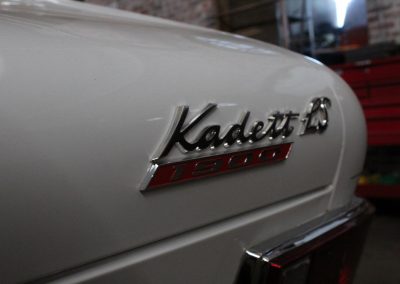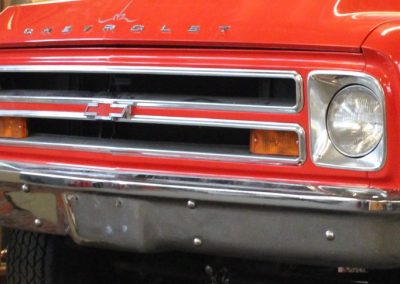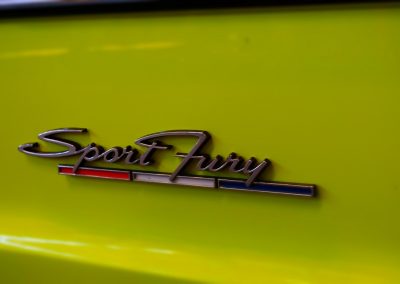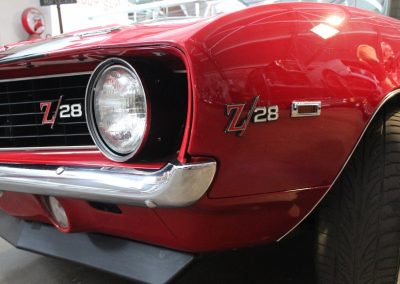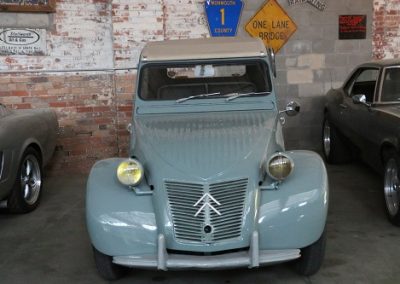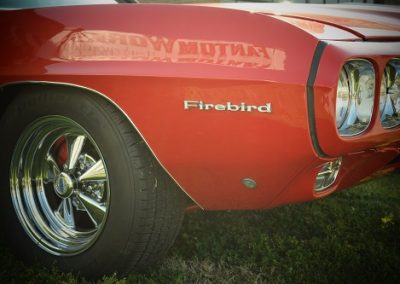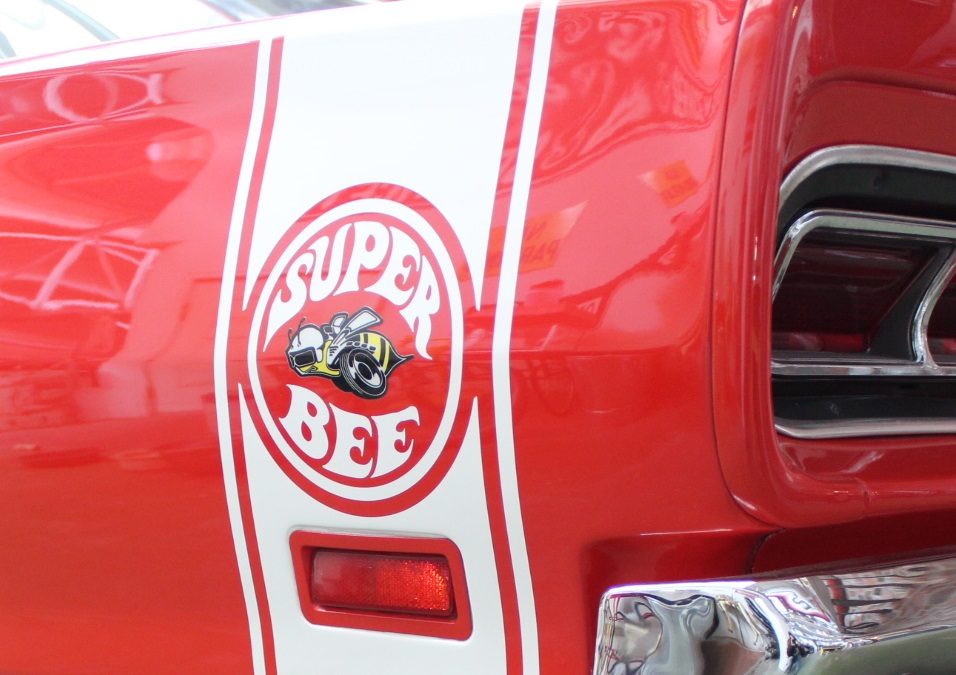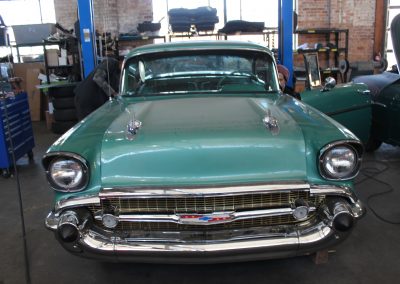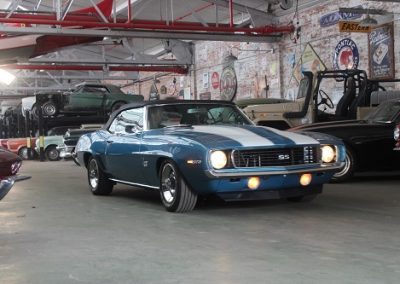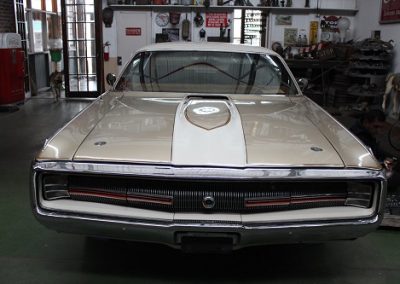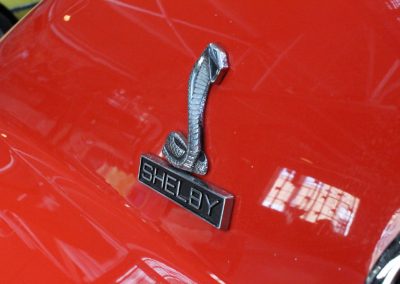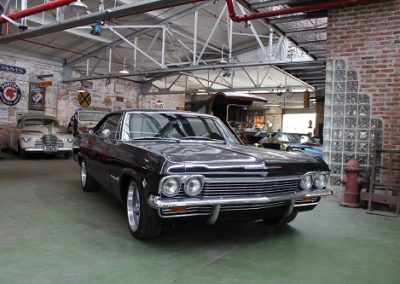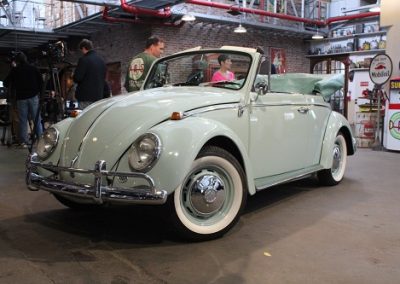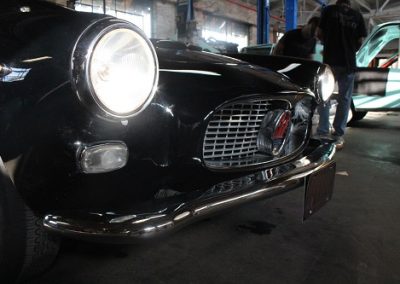1969 Chevrolet Camaro

As seen on Season Five of FantomWorks
Owner Insight:
Explore the Project Galleries
Arrival
Dissassembly
Mechanical
Trim & Detail
Finish
The first-generation Chevrolet Camaro appeared in Chevrolet dealerships in September 1966,[5] for the 1967 model year on a brand-new rear-wheel drive GM F-body platform and was available as a 2-door, 2+2 seat, hardtop (no “B” or center pillar) or convertible with a choice of six-cylinder and V8 power plants.[6]The first-generation Camaro was built through the 1969 model year.
The Camaro’s standard drive train was either a 230 cu in (3.8 L) straight-6 engine rated at 140 hp (104 kW) or a 327 cu in (5.4 L) (307 cu in (5.0 L) later in 1969) V8 engine, with a standard three-speed manual transmission. There were 8 (in 1967), 10 (in 1968), and 12 (in 1969) different engines available in 1967-1969 Camaros. There were several optional transmissions. A four-speed manual was available with any engine. The two-speed “Powerglide” automatic transmission was available all three years. The three-speed “Turbo Hydra-Matic 350” automatic became available starting in 1969. The optional automatic for SS396 cars was the Turbo 400 three-speed automatic.
There was a plethora of other options available all three years, including three main packages:
The RS was an appearance package that included hidden headlights, revised taillights with back-up lights under the rear bumper, RS badging, and exterior bright trim. It was available on any model.
The SS performance package consisted of a 350 or 396 cu in V8 engine and chassis upgrades for better handling and to deal with the additional power. The SS featured non-functional air inlets on the hood, special striping, and SS badging.
The Z/28 performance package was designed (with further modifications) to compete in the SCCA Trans-Am series. It included a solid-lifter 302 V8, 4-speed transmission, power disc brakes, and two wide stripes down the hood and trunk lid.
The idea of offering such a wide variety of “packages” and numerous options was to “blanket” Camaro’s end of the personal car market with everything from a nice, plain and docile Six to a gaudy and fire breathing V8.
Almost all of 1967-1969 Camaros were built in the two U.S. assembly plants: Norwood, Ohio and Van Nuys, California. There were also five non-U.S. Camaro assembly plants in countries that required local assembly and content. These plants were located in the Philippines, Belgium, Switzerland, Venezuela, and Peru.
The 1969 Camaro carried over the previous year’s drivetrain and major mechanical components, but all-new sheetmetal, except the hood and trunk lid, gave the car a substantially sportier look. The grille was redesigned with a heavy “V” cant and deeply inset headlights. New door skins, rear quarter panels, and rear valance panel also gave the car a much lower, wider, more aggressive look. This styling would serve for the 1969 model year only. Collectors often debate the merits of smooth, rounded lines of 1967 and 1968 model versus the heavily creased and sportier looks of the 1969.
To increase competitiveness in the SCCA Trans-Am racing series, optional four wheel disc brakes with four-piston calipers were made available during the year, under RPO JL8, for US$500.30. This system used components from the Corvette and made for a major improvement (except when sport striping or Z28 Special Performance Package is specified), simulated rear fender louvers, front and rear wheel opening moldings, black body sill, RS emblems on grille, steering wheel and rear panel, Rally Sport front fender nameplates, bright accented taillights, back-up lights below rear bumper; also includes bright roof drip moldings on Sport Coupe. $131.65, 37,773 built. This option could be added to any other option (i.e., SS or Z/28), making the model an RS/SS or a RS/Z28.
The Z28 option was still available with the 302 cid small block. It was backed by Muncie four-speed with a new-for-69 standard Hurst shifter and connected to a 12-bolt rear axle with standard 3.73 gears. The 302 featured 11:1 compression, forged pistons, forged steel crankshaft and connecting rods, solid lifter camshaft, and Holley carburetion on a dual-plane intake manifold. A dual four-barrel crossram intake manifold was available as a dealer-installed option.
The 1969 model year was exceptionally long, extending into November 1969, due to manufacturing problem that delayed the introduction of the second generation model planned for 1970. It is a popular myth late-’69 Camaros were sold as 1970 models (due to GM publicity pictures of the ’69 Camaro labeled as a 1970), but they were all assigned 1969 VIN codes.
https://en.wikipedia.org/wiki/Chevrolet_Camaro_(first_generation)
























